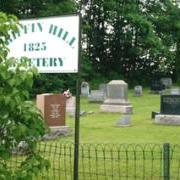 Route 247, between Beebe Plain and the Fitch Bay Narrows, is an undulating, winding stretch of road with some lovely unspoiled scenery, picturesque farms, and splendid views of Owl’s Head, across Lake Memphremagog. It’s a beautiful drive. About halfway between Beebe and the Narrows covered bridge is a cluster of old homes at a crossroads, apparently in the middle of nowhere. This is Griffin’s Corners.
Route 247, between Beebe Plain and the Fitch Bay Narrows, is an undulating, winding stretch of road with some lovely unspoiled scenery, picturesque farms, and splendid views of Owl’s Head, across Lake Memphremagog. It’s a beautiful drive. About halfway between Beebe and the Narrows covered bridge is a cluster of old homes at a crossroads, apparently in the middle of nowhere. This is Griffin’s Corners.
Back in the early nineteenth century, Griffin’s Corners, or Griffin, as it is still known to this day, was a thriving little hamlet in the heart of Stanstead Township. The community was surrounded on all sides by farmland and pasture.
Stanstead Township was one of the earliest settled parts of the Eastern Townships. It was also one of the most prosperous. Stanstead Plain, a village near the Vermont border, was the main village in the area and a bustling centre of activity. The village was also an important stop on the Quebec City-Boston stagecoach route, and home to the region’s only customs house.
When stage service was initiated between Stanstead Plain and Montreal in 1824, Griffin became the first stop along this new route. Travelers would pass through Griffin on their way to Copp’s Ferry (later renamed Georgeville), where they would cross Lake Memphremagog, by ferry, on their way to Bolton, and ultimately Montreal. By the 1830s, an alternate stage route was established via Griffin, Georgeville and The Outlet (Magog), at the north end of Lake Memphremagog.
For many years, stages operated only during the winter months, when roads were frozen and covered in a layer of snow. People traveled by sleigh. During the warmer months, roads were so primitive and bumpy that they were impassable to most wheeled vehicles. As roads were improved in the 1830s and 1840s, wheeled traffic became more frequent and stages more regular. This brought a continuous flow of travelers through Griffin.
At that time, Griffin was a compact, self-contained little community. During its brief heyday in the middle of the nineteenth century, the hamlet had a store, a blacksmith shop, a tannery, a shoemaker, a tailor, a potash factory, a schoolhouse, and two inns or taverns. A superb Union church, one of the first churches in this part of the Townships, was built in 1840-41. It was shared by several denominations, including the Universalists, Methodists and Baptists. For a number of years, it was also a meeting place for the Order of Rechabites, a Temperance organization with a large following in the area. Apparently, Griffin also had a hall for public gatherings and meetings of the local council or school commissioners. Since the community was fairly close to the geographic centre of the township, it was deemed a convenient place to meet.
By the end of the century, however, Griffin was in decline. As James K. Gilman, who grew up in Griffin in the 1830s, wrote in 1892, “the breath of life” had “departed” from the village. Indeed, the only signs of growth were in the cemetery.
In 1933, Griffin’s greatest architectural achievement, its church, burned to the ground. Since it no longer had a regular congregation, it was not rebuilt. Over the years, other homes have fallen into disrepair or have disappeared altogether. A few survive, but not many. One, a sprawling brick home dating to about the 1820s, is being renovated – ever so slowly. Another, the former Bodwell Inn, which later served as the Griffin post office, has been converted to an art gallery. The cemetery, just off the highway on Griffin Road, is well maintained and a pleasant place for a stroll or a picnic. The names and dates, which are fading and covered in lichens, tell the story: Griffin’s time came – and went – a long, long time ago.